Host Factor SPCS1 Regulates the Replication of Japanese Encephalitis Virus through Interactions with Transmembrane Domains of NS2B
- PMID: 29593046
- PMCID: PMC5974503
- DOI: 10.1128/JVI.00197-18
Host Factor SPCS1 Regulates the Replication of Japanese Encephalitis Virus through Interactions with Transmembrane Domains of NS2B
Abstract
Signal peptidase complex subunit 1 (SPCS1) is a newly identified host factor that regulates flavivirus replication, but the molecular mechanism is not fully understood. Here, using Japanese encephalitis virus (JEV) as a model, we investigated the mechanism through which the host factor SPCS1 regulates the replication of flaviviruses. We first validated the regulatory function of SPCS1 in JEV propagation by knocking down and knocking out endogenous SPCS1. The loss of SPCS1 function markedly reduced intracellular virion assembly and the production of infectious JEV particles but did not affect cell entry, RNA replication, or translation of the virus. SPCS1 was found to interact with nonstructural protein 2B (NS2B), which is involved in posttranslational protein processing and virus assembly. Serial deletion mutation of the JEV NS2B protein revealed that two transmembrane domains, NS2B(1-49) and NS2B(84-131), interact with SPCS1. Further mutagenesis analysis of conserved flavivirus residues in two SPCS1 interaction domains of NS2B demonstrated that G12A, G37A, and G47A in NS2B(1-49) and P112A in NS2B(84-131) weakened the interaction with SPCS1. Deletion mutation of SPCS1 revealed that SPCS1(91-169), which contains two transmembrane domains, was involved in interactions with both NS2B(1-49) and NS2B(84-131). Taken together, these results demonstrate that SPCS1 affects viral replication by interacting with NS2B, thereby influencing the posttranslational processing of JEV proteins and the assembly of virions.IMPORTANCE Understanding virus-host interactions is important for elucidating the molecular mechanisms of virus propagation and identifying potential antiviral targets. Previous reports demonstrated that SPCS1 is involved in the flavivirus life cycle, but the mechanism remains unknown. In this study, we confirmed that SPCS1 participates in the posttranslational protein processing and viral assembly stages of the JEV life cycle but not in the cell entry, genome RNA replication, or translation stages. Furthermore, we found that SPCS1 interacts with two independent transmembrane domains of the flavivirus NS2B protein. NS2B also interacts with NS2A, which is proposed to mediate virus assembly. Therefore, we propose a protein-protein interaction model showing how SPCS1 participates in the assembly of JEV particles. These findings expand our understanding of how host factors participate in the flavivirus replication life cycle and identify potential antiviral targets for combating flavivirus infection.
Keywords: assembly; flavivirus; host factor; protein-protein interactions; viral replication.
Copyright © 2018 American Society for Microbiology.
Figures

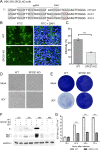


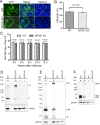


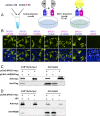

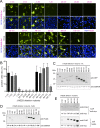
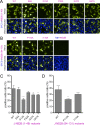
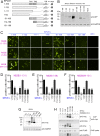

Similar articles
-
Transmembrane Domains of NS2B Contribute to both Viral RNA Replication and Particle Formation in Japanese Encephalitis Virus.J Virol. 2016 May 27;90(12):5735-5749. doi: 10.1128/JVI.00340-16. Print 2016 Jun 15. J Virol. 2016. PMID: 27053551 Free PMC article.
-
Mutagenesis of Dengue Virus Protein NS2A Revealed a Novel Domain Responsible for Virus-Induced Cytopathic Effect and Interactions between NS2A and NS2B Transmembrane Segments.J Virol. 2017 May 26;91(12):e01836-16. doi: 10.1128/JVI.01836-16. Print 2017 Jun 15. J Virol. 2017. PMID: 28381578 Free PMC article.
-
Zika Virus NS2A-Mediated Virion Assembly.mBio. 2019 Oct 29;10(5):e02375-19. doi: 10.1128/mBio.02375-19. mBio. 2019. PMID: 31662457 Free PMC article.
-
The Dengue Virus Replication Complex: From RNA Replication to Protein-Protein Interactions to Evasion of Innate Immunity.Adv Exp Med Biol. 2018;1062:115-129. doi: 10.1007/978-981-10-8727-1_9. Adv Exp Med Biol. 2018. PMID: 29845529 Review.
-
Molecular Determinants of Flavivirus Virion Assembly.Trends Biochem Sci. 2021 May;46(5):378-390. doi: 10.1016/j.tibs.2020.12.007. Epub 2021 Jan 7. Trends Biochem Sci. 2021. PMID: 33423940 Review.
Cited by
-
The G Protein-Coupled Receptor FFAR2 Promotes Internalization during Influenza A Virus Entry.J Virol. 2020 Jan 6;94(2):e01707-19. doi: 10.1128/JVI.01707-19. Print 2020 Jan 6. J Virol. 2020. PMID: 31694949 Free PMC article.
-
Decoding Alzheimer's Disease With Depression: Molecular Insights and Therapeutic Target.J Cell Mol Med. 2025 Mar;29(5):e70454. doi: 10.1111/jcmm.70454. J Cell Mol Med. 2025. PMID: 40074694 Free PMC article.
-
Simultaneous membrane and RNA binding by tick-borne encephalitis virus capsid protein.PLoS Pathog. 2023 Feb 14;19(2):e1011125. doi: 10.1371/journal.ppat.1011125. eCollection 2023 Feb. PLoS Pathog. 2023. PMID: 36787339 Free PMC article.
-
Iminosugars: A host-targeted approach to combat Flaviviridae infections.Antiviral Res. 2020 Dec;184:104881. doi: 10.1016/j.antiviral.2020.104881. Epub 2020 Aug 5. Antiviral Res. 2020. PMID: 32768411 Free PMC article. Review.
-
Avian Influenza A Virus Polymerase Recruits Cellular RNA Helicase eIF4A3 to Promote Viral mRNA Splicing and Spliced mRNA Nuclear Export.Front Microbiol. 2019 Jul 16;10:1625. doi: 10.3389/fmicb.2019.01625. eCollection 2019. Front Microbiol. 2019. PMID: 31379779 Free PMC article.
References
Publication types
MeSH terms
Substances
LinkOut - more resources
Full Text Sources
Other Literature Sources
Molecular Biology Databases

